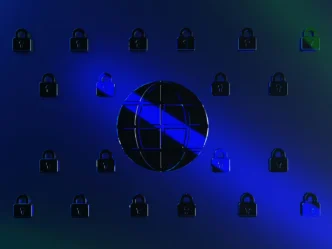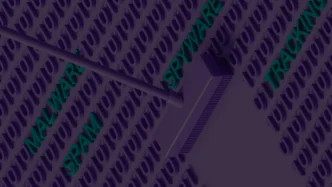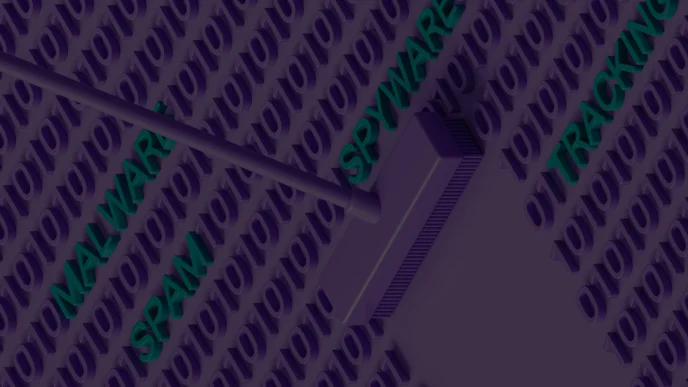The NIS2 directive demands more than mere regulatory compliance—it calls for a paradigm shift in how European boards oversee cyber-risk. This article offers a breakthrough perspective on the NIS2 cyber-risk mandate by diving deep into the technical and strategic measures that can elevate board-level cybersecurity governance.
Dissecting the NIS2 Mandate
NIS2 (Network and Information Security Directive 2) expands on its predecessor by not only increasing the scope of regulated entities but also intensifying accountability at the board level. The directive is designed to fortify critical sectors such as energy, finance, and healthcare against increasingly sophisticated cyber threats.
Key Technical Enhancements
NIS2 is not just about more checklists—it demands a technical overhaul of existing cybersecurity architectures:
- Comprehensive Threat Modelling: Boards must understand that traditional risk assessments are inadequate. Modern threat modelling now incorporates advanced analytics, including machine learning algorithms that predict attack vectors based on global threat intelligence feeds.
- Integration of Automated Incident Response: With breach response times shrinking to minutes, the directive emphasizes the need for automated remediation workflows. Technologies such as SOAR (Security Orchestration, Automation, and Response) platforms enable organizations to quickly neutralize threats without waiting for human intervention.
- Enhanced Data Correlation: NIS2 requires organizations to deploy integrated Security Information and Event Management (SIEM) systems. These platforms aggregate logs from disparate sources, correlating events to provide a holistic view of the cyber threat landscape—a critical asset for board-level oversight.
The Board’s Role: Beyond Compliance to Strategic Advantage
While NIS2 establishes a regulatory framework, its true potential is unlocked when boards transform compliance into a strategic asset. Cybersecurity is no longer a peripheral concern—it is integral to the organization’s survival and competitive edge.
Elevating Cyber-Risk to Boardroom Priority
Boards must adopt a proactive, rather than reactive, stance toward cybersecurity:
- Direct Involvement in Cyber Strategy: Rather than delegating cyber risk to IT departments, boards must integrate cybersecurity into the overall corporate strategy. This involves regular briefings on cyber threat developments, tailored to a non-technical audience yet grounded in technical reality.
- Investment in Advanced Technologies: The rapid evolution of cyber threats necessitates investments in next-generation cybersecurity solutions. Boards should push for the deployment of AI-driven threat intelligence platforms and Zero Trust architectures, which ensure that every network request is continuously verified against dynamic risk profiles.
- Embedding Cyber-Risk Metrics into Performance Reviews: Cybersecurity KPIs—such as mean time to detection (MTTD) and mean time to response (MTTR)—should become as integral to performance reviews as financial metrics. This transparency creates a culture of accountability and continuous improvement.
Bridging the Gap Between Technical and Strategic Perspectives
Boards that succeed in the NIS2 era will be those that foster a dialogue between cybersecurity experts and senior management. This collaborative approach can be achieved through:
- Dedicated Cybersecurity Committees: Forming specialized board subcommittees ensures that cybersecurity is given dedicated oversight. These committees should be staffed not only by board members but also by external cybersecurity advisors with proven expertise in threat detection and incident response.
- Advanced Training and Simulation Exercises: Regular training sessions and cyber-attack simulations, where board members participate alongside technical experts, can demystify complex cyber threats. This hands-on approach builds the requisite confidence and knowledge needed for high-stakes decision-making.
Technical Breakthroughs: Leading Cybersecurity Solutions in the NIS2 Era
To fully grasp the NIS2 cyber-risk mandate, it is crucial to examine the breakthrough technologies that are setting the new standard for cybersecurity resilience.
AI-Driven Threat Intelligence Platforms
Modern threat intelligence platforms have evolved into sophisticated systems that harness artificial intelligence and machine learning to predict and mitigate cyber threats. Their capabilities include:
- Predictive Analytics: Leveraging AI to analyze historical data and emerging threat patterns, these platforms provide predictive insights that allow boards to preemptively allocate resources and adjust risk postures.
- Automated Triage: By automating the classification and prioritization of threats, AI-driven platforms reduce false positives and enable security teams to focus on genuine risks. This technology ensures that boards receive only actionable intelligence.
- Integration with Global Threat Feeds: Continuous data exchange with international threat intelligence networks enriches local datasets, offering a comprehensive view of the global cyber landscape. This integration is vital for aligning local risk management with worldwide trends.
Zero Trust Architectures
Zero Trust is not a buzzword—it’s a breakthrough model that redefines network security. The core principle is simple: trust no one, verify everything. For boards, this means:
- Granular Access Controls: Implementing strict access policies that require multi-factor authentication and continuous verification for every user and device. This minimizes the attack surface, particularly in hybrid and remote work environments.
- Micro-Segmentation: Dividing networks into isolated segments to prevent lateral movement in the event of a breach. This approach is a cornerstone of reducing systemic risk in complex IT ecosystems.
- Continuous Monitoring: Employing real-time monitoring tools that constantly assess the security posture of every endpoint. These tools alert security teams to anomalous behavior, facilitating rapid containment of potential breaches.
Next-Generation SIEM and SOAR Integration
The synergy between SIEM and SOAR platforms marks a significant technical advancement in managing NIS2 cyber-risk:
- Real-Time Analytics: Next-generation SIEM systems utilize big data analytics to correlate disparate events across networks. They provide boards with dashboards that translate technical data into strategic insights.
- Automated Incident Orchestration: SOAR platforms complement SIEM by automating response actions based on predefined playbooks. This integration ensures that incidents are not only detected but are also remediated in real-time—drastically reducing the window of exposure.
- Compliance Reporting: Automated reporting features ensure that every incident and response action is documented, simplifying compliance audits and providing boards with transparent oversight.
Implementing a Breakthrough Cyber-Risk Strategy
The path to a breakthrough cyber-risk strategy under NIS2 begins with the board’s commitment to marrying technology with governance. Here are concrete steps for board members:
Step 1: Conduct a Comprehensive Cyber-Risk Audit
Engage third-party experts to perform an exhaustive audit of current cybersecurity practices. This audit should:
- Map out all digital assets and identify critical vulnerabilities.
- Evaluate the integration of current technologies such as SIEM, SOAR, and AI platforms.
- Assess the effectiveness of existing incident response protocols against advanced threat scenarios.
Step 2: Formulate a Strategic Cybersecurity Roadmap
Based on audit findings, develop a detailed roadmap that includes:
- Technology Investments: Prioritize upgrades to AI-driven threat intelligence and Zero Trust architectures.
- Process Enhancements: Revise incident response plans to incorporate automated workflows and continuous monitoring.
- Training Programs: Implement mandatory cybersecurity training for all board members and executives, with periodic simulations to test readiness.
Step 3: Establish Continuous Oversight Mechanisms
Create a framework for ongoing cyber-risk management that includes:
- Regular Cyber Briefings: Schedule monthly updates from the cybersecurity committee to review incident reports, threat intelligence, and risk metrics.
- Dynamic Risk Dashboards: Invest in real-time dashboards that integrate data from SIEM, SOAR, and other cybersecurity tools, providing the board with an actionable view of the organization’s cyber-risk landscape.
- Benchmarking and KPIs: Define and track specific KPIs to measure the effectiveness of the cybersecurity strategy, ensuring continuous alignment with NIS2 requirements.
Conclusion
NIS2 cyber-risk is a transformative mandate that pushes European boards to reimagine their role in cybersecurity. This breakthrough approach requires moving beyond traditional compliance frameworks to embrace advanced technologies and robust governance models. By leveraging AI-driven threat intelligence, Zero Trust architectures, and integrated SIEM-SOAR solutions, boards can not only achieve compliance but also build a resilient, proactive cybersecurity posture.
The NIS2 directive is more than a regulatory challenge—it’s an opportunity for boardrooms to lead with precision, harnessing breakthrough technologies that secure their organization’s future.














